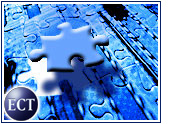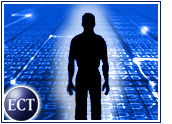
In its infancy, e-commerce was all about building a Web site, attracting “eyeballs” and capturing orders. Mega corporations and upstarts alike rushed to the Web like pioneers digging for gold. They raced to build user interfaces and electronic shopping carts that mimicked the brick-and-mortar experience.
But within a few years, like most infants, e-commerce players began crying. With millions invested and no profitability in sight, many were forced to close their virtual doors.
Now that e-commerce has moved beyond the shakeout stage, reaching toddlerhood and preparing for adolescence, the primary goal is customer-centric order fulfillment.
Enter phase two for e-commerce. What can we expect to see within the sector as the second era of e-commerce gathers steam? Analysts pointed out several key trends to watch.
New Technologies
Aberdeen Group analyst Kent Allen told the E-Commerce Times that new e-commerce technologies are emerging to address critical issues, such as distributed order management and support for merchandising processes.
While up-selling and cross-selling were key focuses in phase one, support for demand forecasting, product optimization and pricing execution technologies are now popular topics. Post-sale functions, such as invoice reconciliation, managing warranties, and returns and reverse logistics also are demanding attention.
Allen noted that savvy companies are automating processes and reducing costs on the customer service end, streamlining replenishment and aftermarket selling opportunities.
“There’s a lot of low-hanging fruit after you’ve captured the order and shipped the product,” he said. “The idea is to weed out some of the manual processes.”
Spending Mix
Meanwhile, on the consumer end, phase two features a wider spending mix. The early days of e-commerce depended on just five categories — computers, online brokerages, online travel, books and music, and auctions — to generate 75 percent of sales.
Analysts have predicted that those categories soon will generate only 50 percent of online sales, as shoppers diversify their purchases to include clothing, pharmaceuticals, groceries, communication services and general merchandise.
“Groceries are an area that went through a big wave of interest a couple of years ago, then went through a valley last year, but may start to come back this year,” Giga Information Group analyst Andrew Bartels told the E-Commerce Times.
Multichannel Selling
In addition to buying different types of products, analysts said, online shoppers also are taking advantage of multiple channels. Companies like Best Buy and Circuit City are gaining experience with systems that let customers reserve products online for in-store pickup. And office supply chains like Staples, Office Depot and Office Max also are doing a good job of multichannel selling.
In a soon-to-be released Aberdeen Group paper, Staples reports that 86 percent of new customers engage in some e-commerce activity. The company also boasts a 90 percent retention rate, and expects its online channel to drive 70 percent of all orders by year-end.
“The challenge is getting information from one channel to another channel,” Bartels said. “You have to make sure that inventory is held by the store so you don’t have a customer show up and the item is not there.”
Real-Time Rules
That challenge can be met by e-commerce technologies. Therefore, phase two e-commerce players are investing in real-time capabilities to manage orders, GartnerG2 analyst Geri Spieler told the E-Commerce Times. According to Gartner, real-time order processing can increase order-fulfillment accuracy and productivity by 50 percent.
However, many firms are still struggling to reserve inventory and to deliver a single order to a single customer.
“The businesses that have volume are looking at real-time for their supply chain and their inventory so that they know what they’ve got [and] when it’s coming, and they can avoid stock-outs and overstocks,” Spieler said.
Manufacturer Direct
No one knows inventory better than manufacturers. While Levi-Strauss took a lot of flak from its retail partners for selling jeans and khakis online in the early stages of e-commerce adoption, fear of channel conflict is fading in phase two.
“Retailers are no longer as scared of being ‘Amazoned’ as they were,” said Bartels. “That gives manufacturers an opportunity to do direct sales to customers on a limited basis.”
Levi, Mattel, Fisher-Price and Sony are among those selling direct, while Black & Decker provides links to third-party vendors on its corporate Web site.
Improved Profitability
Perhaps the most heartening trend in the second phase of e-commerce is improved profitability spurred by the aforementioned second-generation innovations. According to analysts, we probably will not see a return to 300 percent growth anytime soon, but 20 percent year-over-year growth is realistic.
“The returns are starting to roll in from what you might call chapter two of e-commerce,” said Allen. “There’s always going to be challenges out there for an evolving channel, but the results in phase two look very solid.”


























































I like the theme of the article. However, since the web has a large number of medium and small businesses, I believe that the subject needs to address how Phase Two will affect these businesses that have been or will be looking to the Web as a medium of selling their products and services.
Alan J. Zell, Ambassador Of Selling
[email protected]
Chairman, PNW Sales & Marketing Group